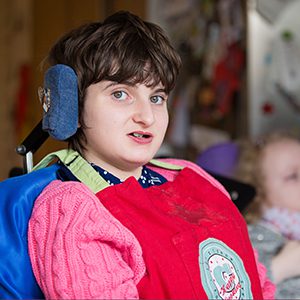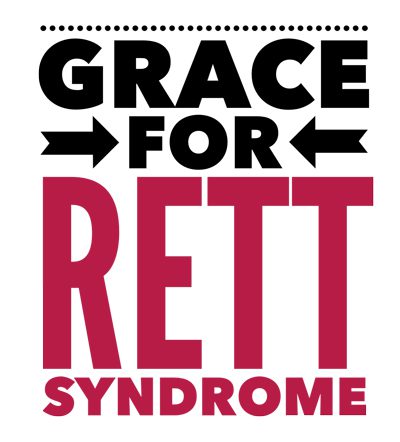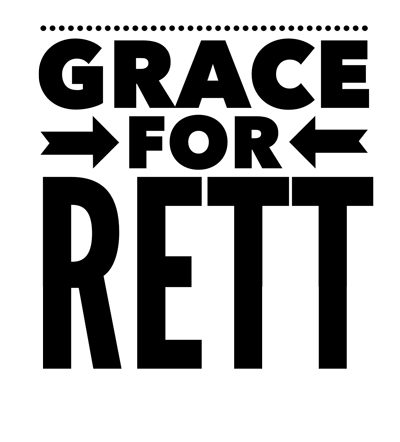 This is Charlie —> I took this photo at one of the Cure Rett Picture the Hope Awareness Tour photo shoot days. And then just a day or two later, she fractured her femur at school. She wasn’t doing anything spectacularly taxing – just hanging out in the sensory room. She was simply moved and that’s when they believe the fracture happened.
This is Charlie —> I took this photo at one of the Cure Rett Picture the Hope Awareness Tour photo shoot days. And then just a day or two later, she fractured her femur at school. She wasn’t doing anything spectacularly taxing – just hanging out in the sensory room. She was simply moved and that’s when they believe the fracture happened.
At that very same photo day, I met Kathryn (age 17) who has also suffered a break to her femur. And this got me thinking – maybe we should talk about osteoporosis.
It’s estimated that 40% of girls and young women with Rett suffer osteoporosis which causes their bones to be brittle. Osteoporosis is a disease of the bones that is marked by decreased bone mass. This puts sufferers at a higher risk of bone breaks.
There is no cure for osteoporosis and although there are ways to prevent or decrease the chances of developing it, most of those measures aren’t practical for those with Rett because they involve physical abilities which many girls just don’t possess at the time of their lives when prevention is key. Prevention of osteoporosis comes in three departments: lifestyle, diet and medication.
[LIFESTYLE]
Some ways that the general population who are at risk for osteoporosis are recommended to live their lives are:

Kathryn has also broken her femur
Smoking and drinking. Tobacco and high alcohol intake are associated with osteoporosis. Obviously, people will Rett don’t smoke or drink. But limiting their exposure to second hand smoke is smart for many reasons and this is one of them.
Weight bearing exercise. Exercise is a very important part of keeping your bones strong and healthy. Running, weight lifting and resistance exercises build bone density. What does this look like for people with Rett? Well, walking is a good start. Girls and women who are mobile on their feet will be at a lower risk for decreased bone density, although it doesn’t eliminate the risk all together. For those who aren’t mobile, a regimen of physical therapy including time every day in a standing frame is important. But this doesn’t mean that a mobile girl with Rett can’t get it. Kathryn (left) walked until she was 8 and at the age of 11, her femur snapped and she was diagnosed with severs osteoporosis. She now has Pamidronate infusions in hospital every 3 months.
Fall & injury prevention. It’s not uncommon to hear about the elderly suffering hip breaks from falling. This is a result of brittle bones coupled with a fall or injury. The fall or injury doesn’t need to be especially traumatising. As we heard about Charlie at the beginning of this post, she was merely moved from one position to another when she suffered her break. So like with the elderly who have osteoporosis, it’s important to take all possible measures to prevent falls or injury to our girls and women with Rett. For those who are mobile on their feet, this takes constant and intensive supervision. For those who aren’t, it’s important to make use of all available prevention measures such as hoisting rather than lifting and a limited number of transfers from one piece of equipment to another.
[DIET & SUPPLEMENTS]
Interestingly, the idea that calcium and vitamin D will prevent osteoporosis isn’t altogether true. There’s some evidence that supplementation for postmenopausal women can be helpful, but this doesn’t necessarily have an effect on girls and young women with Rett. In fact, too much calcium (which can’t be absorbed without vitamin D) can cause constipation (which is already an issue), gas and kidney stones. Luckily, kidney stones are known to affect men more often than women, but the lack of verbal communication for those with Rett means eliminating as many pain-inducing conditions as possible is of utmost importance because, quite simply, they can’t tell us what hurts.
If you want to naturally enhance one’s diet, dairy isn’t the only (or best) way to get calcium into your body. In fact, dairy can cause increased phlegm, constipation and acid reflux and all of these are risky for our girls who already so often suffer with those conditions. Better ways to get calcium in your diet are green leafy vegetables, nuts (especially almonds) and soy. Vitamin d3 (not d2 which is commonly found in supplements) is necessary for calcium digestion and utilisation. This is found in the fish oils which many give to their children with Rett. However, the best source is good old fashioned sunshine.
Now, calcium is an element so if you have to think about it this way: eating foods that come out of the ground which have absorbed calcium from the earth vs. eating animal secretions composed of digested foods that come out of the ground. It’s better to go straight to the source so you get the most bio-available nutrients, hence getting your calcium through veggies rather than dairy
If you’re going to take a calcium supplement some suggest mixing it up. Take calcium carbonate one day and calcium citrate the next, for example.
[MEDICATION]
There are medications available to people who have already suffered breaks as well as for those with osteopenia which is known a precursor to osteoporosis, but these treatments are considered controversial, the benefits are slight and can take 4 years to begin to affect bone density. Additionally, they’re usually only available to postmenopausal women whose osteoporosis is due to hormonal changes, not for those who suffer it because of lack of mobility or insufficient diet.
A note on osteopenia: Osteopenia was first introduced in 1992 as a sort of one-step-before-osteoporosis condition. The diagnosis of both conditions involves a bone density test (a sort of x-ray) and with osteopenia, the bone is less dense than normal, but not enough to constitute osteoporosis. Being that there is very little that can be done to treat these conditions, the introduction of this new diagnosis is said to cause pointless worry.
[Conclusion]
As Rett parents, we know there’s no end to things we can be worried about for our kids. Heck, even our kids who don’t have Rett can cause us sleepless nights! But I believe that knowledge is power and getting educated on all facets of this Rett life will help us better face it. So if you take only a few things away today when it comes to osteoporosis, remember this: 40% of girls with Rett will have osteoporosis in their lifetime. So be careful with their bones and seek advice from their doctors. Not all doctors are aware of the things that a patient with Rett may face in their lifetime so arm yourself with the information you need to help her doctor(s) see the importance of looking into osteoporosis as she grows older. And one last thing…worrying too much won’t do a darn thing.
[further reading]
Calcium and Vitamin D from the National Osteoporosis Foundation





